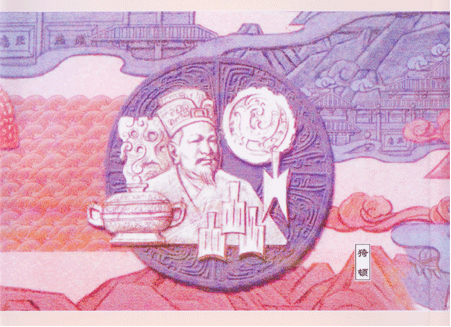
On the west side of Wangliao Village of Linyi, there is a large and remarkable grave, which is the ancient tomb of the millionaire Yi Dun(猗顿) in the Warring States Period.
Yi Dun was not a native of Hedong, he was a “poor man of Shandong”. He had no choice but to ask Childe Taozhu Fan Li, a local millionaire, how to make a fortune. Fan Li told him, “If you devote yourself in animal husbandry, you can get rich quickly.” Upon hearing Fan Li’s words, Yi Dun left his hometown and came to Hedong. Under the lush E’mei Hill, he engaged in animal husbandry and the animals multiplied in large numbers. In less than ten years, he had countless cattle and sheep. He became a millionaire from a “poor man of Shandong”, and became famous all over the world. He even enjoyed equal popularity with Childe Taozhu. Because he gained fame and fortune in Yi Dun, people call him Yi Dun; his real name was lost.
After Yi Dun came to Hedong, he settled down in Wangliao Village, 20 miles south of Yishi County, until he died. There is house of Yi Dun in Wangliao, but nowadays, the location is impossible to verify after a long history. After his death, he was buried in the west of Wangliao, and he did not move back to his hometown for burial.
When it comes to the burial of Yi Dun, there are still interesting stories among the people of Yishi.
One is the help of Yi Dun to Yuncheng Salt Pond. At that time, Yuncheng was rich in salt, but because of poor transportation, salt was not widely sold, and people who lived nearby were poor. Yi Dun used his animals to carry out salt and sold to Qin State, Yu State and Lu State. In this way, the production of salt pond has been greatly activated, and to a certain extent, it has brought benefits to the local people. Yi Dun was not only engaged in transportation, but also in salt mining and salt trading. Sima Qian said in Biographies of Merchants in Historical Records, “Yi Dun started with salt business.”
The second is the construction of local water resources. The Sushui River, which ran across the southern part of Yishi, was a “harmful river” at that time: it dried up in drought, overflowed in rain and waterlogging, and could not irrigate the fields, thus causing disasters to crops. Yi Dun employed labor to dredge rivers and widen riverbanks. Hence, the “harmful river” became the “beneficial river” for the people.
The third is Yi Dun’s almsgiving to the poor people. When Yi Dun became a millionaire, he did not forget his drought years of poverty, and often did some good deeds, including repairing bridges and roads.
Because of the above reasons, after more than two thousand years, during which many ancient tombs have disappeared one after another, as a foreigner, Yi Dun’s tomb has not disappeared, but has been well protected. This is really worth pondering.

